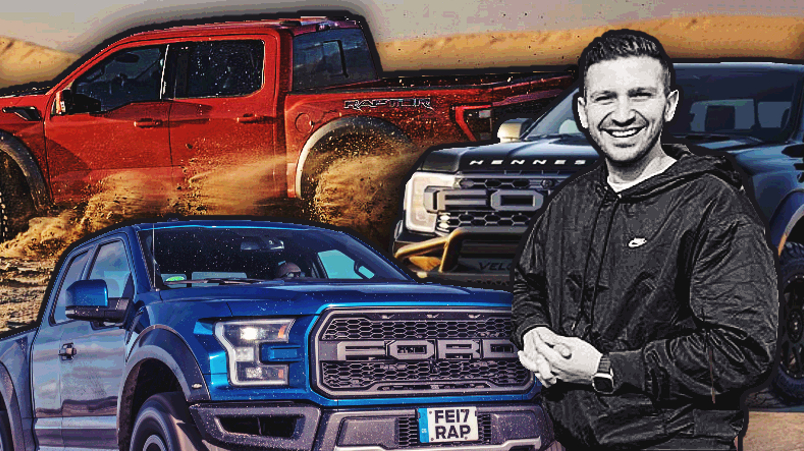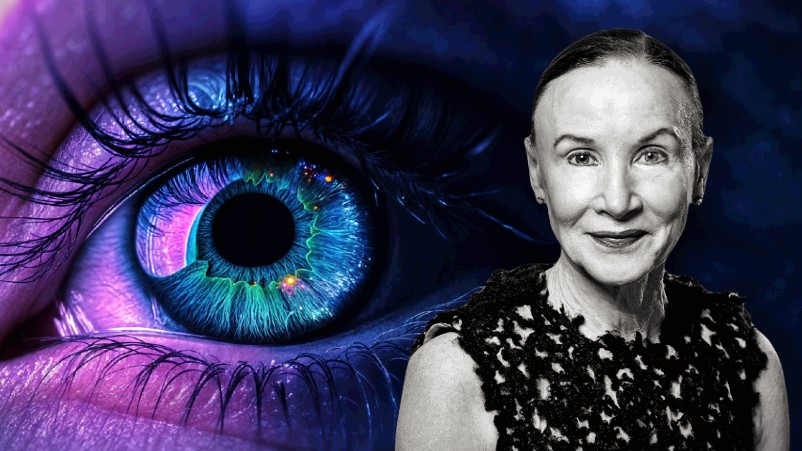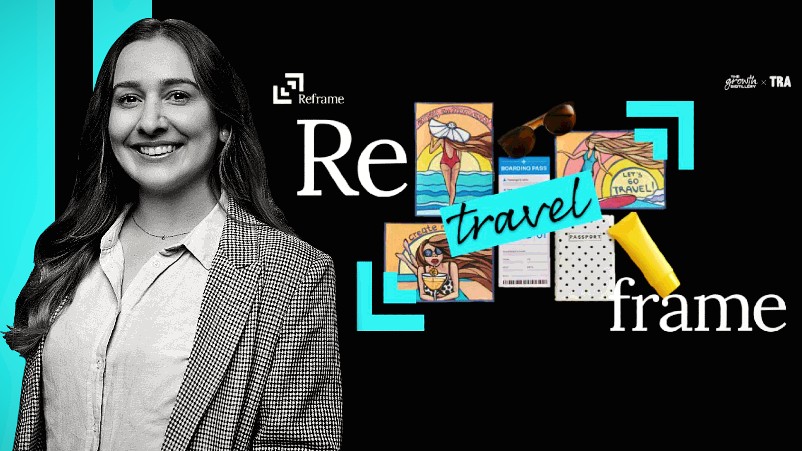Ford powers past Mitsubishi, Hyundai and Kia as AFL, The Block, big Fridays – and Australia’s beefy ute obsession – pays off; Now it’s eyeing Tesla’s turf

John Hatzimanolis, GM, Marketing Communications, Ford
The pecking order at the top of Australia’s automotive table is being shaken up. Kia last year powered into third place as its long-term brand investment – and a bit of luck with stock management when most auto supply chains were Covid-stricken – paid off. Ford, heavily product-focused over brand, languished in sixth. But this year Ford is powering – sales are up 37 per cent as Australia goes nuts for its utes and SUVs – as almost all of its major rivals go backwards. Now it’s in third and looking upwards at Mazda and Toyota. Later this year, it will take on Tesla with the Mustang Mach-E, though marketing boss John Hatzimanolis claims he’s not focused on competitors at all. Hatzimanolis and Mindshare’s Mark Bennett say going heavy on live sport, tent-pole sponsorships and integration – with more to come – are moving the needle. Just don’t call it an overnight success.
What you need to know:
- Ford is powering this year, rapidly overtaking rivals.
- Australian developed products – the Ranger ute and Everest SUV – are driving the lion’s share of growth.
- Versus some rivals, Ford has consistently taken a product-focused approach over brand when it comes to media, going hard on AFL and The Block and saving its biggest splashes for Fridays.
- Next up, it’s got another ute – or pick-up – landing: the F150, Ford’s best selling truck in the US for decades.
- Plus an electric SUV crossover, aimed squarely at Tesla’s rapidly increasing market.
- Both are due before Christmas – which means the back of the year will see Ford ramp up spend.
- Marketing boss John Hatzimanolis and Mindshare’s Mark Bennett are eyeing further integration activity.
It's not been necessarily a conscious play to target Mitsubishi or Toyota. It's been about being the best at understanding pick-up owners and SUV owners. It's about having a core set of vehicles in our in our range that we think are the best in class and where we can win.
Toyota last year sold one in five of every new car in Australia, its best ever year even amid decades of dominance. Ford was left eating Mazda, Kia, Hyundai and Mitsubish’s dust, trailing in sixth place after a supply-marred year.
But Toyota is now going backwards, fast (-21 per cent year-to-date). Ford is powering (up 37 per cent). It’s overtaken Mitsubishi (-26 per cent), Hyundai (-1.6 per cent) and in the last week or two has roared past Kia (-1.8 per cent), though August sales data will confirm that early next month. Catching Mazda will be a stretch too far. But the next year or two may well tell a different story.
The reason is Ford’s utes – it prefers to call them pick-ups – and SUVs designed and developed in Australia are starting to seriously motor. The Ranger made up more than two thirds of its sales in 2022 and the Everest SUV most of the rest. And for the last few years, Ford’s been promoting the heck out of them via big sponsorships, live sport, particularly AFL, and going broad on audiences – focusing its marketing investment largely on the two models, specifically the product over the brand.
Long game
The numbers suggest Ford is taking most share from Mitsubishi and Toyota, both strong in utes and SUVs. But John Hatzimanolis, Ford’s GM, Marketing Communications, insists the firm is focused squarely on customers, not rivals – and that 2023’s success has been years in the making.
“It's not been necessarily a conscious play just to target Mitsubishi or Toyota. It's been about being the best at understanding pick-up owners and SUV owners,” he told Mi3.
“It's about having a core set of vehicles in our in our range that we think are the best in class and where we can win … We don't normally have a wide spread [of models]. We tend to be really focused in our decision-making and our investments.”
The same applies to media – and the long-range thinking that went into developing the Ranger and Everest products seeded the marketing investment plan that is now driving major growth.
“We've been lucky enough to develop two amazing products in Australia that are resonating with customers. But that work started a long time ago,” said Hatzimanolis.
“We've done a lot of research in understanding those customers and making sure we build a product that's right for them. And in doing that research, in developing that audience, it's meant that as we've been developing both our content plans and our media plans, we've really understood where to go, who to target and how to speak to them,” he added.
“So what we're seeing now is the combination of a lot of hard work. It’s not just from the last six months.”
Sponsorships winning
Proper long-term thinking also applies to sponsorship. Hatzimanolis points out Ford’s partnership with Geelong Cats will be 100 years old in 2025, believed to be the longest brand-sports partnership in the world. Naturally, it’s also a long-time V8 Supercars sponsor.
Its partnership with Nine’s The Block is not quite as historic, but Ford is now into season four as a sponsor. Hatzimanolis hints it has no plans to change tack – he said the show delivered 22 per cent consideration uplift amongst its audience in 2022 and that key brand perception metrics “continue to see uplift from Block viewers every season”.
“We don't tend to turn up for a short period of time and then walk away. We tend to look at longer-term success and we look at partnerships from both ends of the spectrum, making sure that both Ford and the partner are getting value out of that equation.”
Nine, now drumming up Olympics packages, will be pleased to hear that, as will other publishers and rights holders. While Hatzimanolis suggested the carmaker is not about to go on a major spray – having just signed up to sponsor the Australian Womens Basketball team – and will pick partners based on audience quality, Mark Bennett, Integrated Media Lead for Ford at Mindshare, suggests there’s more integrated action to come
An integration piece allows us to tell a story, the longer-form content allows us to tell a story. So those partnership elements, you will see being a little more prominent moving forward.
More integration
“In terms of partnerships that are a little bit deeper, an integration piece allows us to tell a story, the longer-form content allows us to tell a story. So those partnership elements, you will see being a little more prominent moving forward,” said Bennett.
“What comes along with those partnerships is an element of greater frequency and greater share of voice,” he added. While Ford and Mindshare “don’t go out of our way” to drive excess share of voice (ESOV, the marketing principle that suggests brands that are more visible in market than their market share will grow), Bennett said it will take the right opportunities as they come. “If we can overinvest in spaces that are fairly engaging to our audiences, then we will do so.”
While going broad across properties can pose challenges with frequency (with BVOD in particular) particularly on Fridays where Ford goes heavier than any other day of the week – Bennett said GroupM’s Finecast operation has that “under control”.
Either way, the brand metrics, and the sales, are inarguably are moving strongly in the right direction.
We can't generally share numbers ... [of pre-orders for the incoming Mach-E electric vehicle]. But the Mach-E will be an ongoing model line. It's not a car that we're bringing in short numbers. We're expecting it to be a car that delivers volume ongoing versus incremental drops.
New ute, EVs incoming
Ford tends to go heavier on ad spend during the second half of the year. This year it may go harder still ahead of the launch of its F-150 pick-up truck and the electric Mustang Mach-E, both due at dealerships within the next couple of months.
“We're looking forward to telling more and more customers the story of those two products, they're probably the predominant additional investments that will make in the back half of the year,” said Hatzimanolis.
The Mustang Mach-E is an SUV crossover that will go head to head with Tesla’s Model Y, now the best selling car in its class full stop, ahead of petrol and diesel powered rivals.
Ford’s taking pre-orders – a first for the firm – and while Hatzimanolis won’t be drawn on numbers, he’s expecting it to go large.
“From a mass marketing point of view, that will be one that we're really excited to communicate. Demand signals have been really positive, but they tend to increase significantly when cars hit the road and the dealerships.”
Kia last year told Mi3 it had received 30,000 expressions of interest in its EV6 before the car arrived in numbers, with three times higher demand than any combustion engine model it has brought to market. Is Ford getting anywhere near those levels?
Hatzimanolis doesn’t bite, though maybe nods to some of the issues with EV supply volumes that other brands have struggled with.
“We can't generally share numbers externally. But we're really excited by the consumer response. The Mach-E will be an ongoing model line. It's not a car that we're bringing in short numbers. We're expecting it to be a car that delivers volume ongoing versus incremental drops.”
No DTC plan
While other carmakers are pushing towards Telsa-esque direct-to-consumer models, Ford has no such plans.
“We see dealers as a key asset, they are critical to our success,” said Hatzimanolis. “We don't have any plans to sell vehicles directly.”
Likewise, Ford is hedging its bets on electric vehicles – committing to go all-electric in Europe by 2030, where the EU has strict mandates, but giving itself more leeway in other markets.
“We’re starting to see increasing demand in Australia for EVs. But from our point of view, it's ultimately about having the right vehicles for our customers – whether that's internal combustion, hybrid or fully electric,” said Hatzimanolis. “It's really about having the right car for the customer that's fit for purpose.”
But he does think that range anxiety – people worried about EV batteries running flat – is overstated, especially in metro areas.
“The average customer drives their car less than 50 kilometres a day. So probably the number one [customer] challenge is in understanding the product. It takes time – and with all new products that come to market, there's that adoption curve. We’re now just seeing how that comes to life.”
Reel-in the big two?
So with Mazda and ultimately Toyota in its sights, can Ford – with its long-range strategic plan – continue to close the gap?
Hatzimanolis plays down the rivalries.
“For us, it’s not really about where we end up ranking. It’s more about sustainable growth and ensuring we’re making strategic investments for long-term success. So it’s nice to be third, it’s nice to see us climb the rankings. But that’s not necessarily what we regard as success,” said Hatzimanolis.
That said, he’s confident that Ford has the product and the game-plan to keep momentum rolling.
“We have a lot of exciting products coming – a new Mustang in June next year as well as the F150 and Mach-E. We think it’s one of the most exciting portfolios we’ve ever had. So yes, hopefully, long may that continue.”


